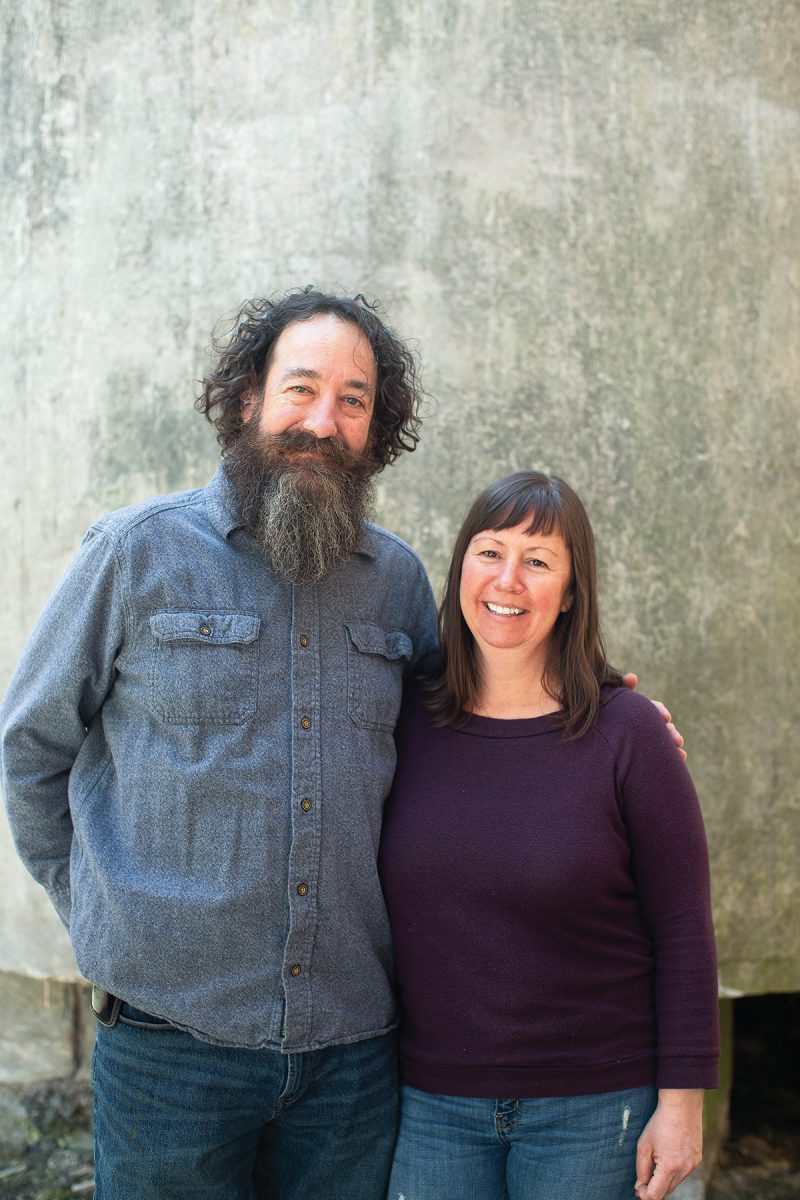Popular kitchen towels remain a hands-on endeavor

Photo by Colby Rabon
Daphne Cohan, co-creator of The High Fiber, sells handprinted towels and napkins to more than 200 retailers in the United States and Canada. And yet, she says with a laugh, “I never intended to build a business.”
She was just looking for a better alternative to the kitchen towels she and her husband Ed — a professional chef — used in their home kitchen. “The towel thing just kind of happened,” she says. “Kitchen towels either worked well but looked like your grandma’s plaid towel, or were super cute but just moved water around. I wanted a towel that was fun and functional.”

Since childhood, Cohan says, she’s kept busy with her hands; when a babysitter gave her a bag of fabric scraps, she used them to create clothes for her Barbies. Though she went to college with the intent of being a veterinarian, her love of fabrics and textiles remained. When she began sewing clothes for her three young (now teenage) children, Cohan decided to learn how to block print to make her own fabric.
Block printing worked well for a dress or shirts, but to fulfill growing requests from friends who saw her kitchen towels, she needed a more efficient process. “If I kept using block prints, it would have taken me two days to make ten towels,” she explains. “That’s when I got serious about learning how to transfer the prints into a computer to make a pattern, then transfer that print and teach myself screenprinting.”
Though the method produces a high yield, Cohan stresses that the process remains very low tech. Rather than using machines to create their screens, she and Ed rely on solar energy — literally. “To burn a new screen when there is good sunshine, I coat the screen with an emulsion, run outside, stand next to it, count to 45, cover it up, run back inside, and hose off what has not hardened to reveal the design,” she explains. Her husband’s role in the manufacturing is also powered by clean energy — his own. “Ed physically prints every piece of fabric, using the screen, a squeegee, and his two arms to spread the ink across the screen. There are machines that do that, but we prefer to do it by hand.”

Photo by Colby Rabon
She also prefers fabric that has stood the test of time and purpose. “We tried out so many, and these flour-sack [style] towels are of natural and unbleached cotton, not chemically altered, so they last longer.” The High Fiber line also includes tea towels and napkins made of a linen/cotton blend. The napkins, she says, have become an extremely popular alternative to paper products — a response, perhaps, to more people eating at home in 2020.
The High Fiber’s first designs when they launched in 2009 were chickens, cows, and pigs. Of the dozens of choices available now, the chickens — along with bees — are the most popular.
“There’s always something — chickens, vintage campers, bunnies, butterflies — [that] someone is obsessed with,” Cohan observes. “And we have usually have a print for it.”
The High Fiber, 191 Lyman St., Studio 228, Riverview Station in Asheville’s River Arts District. Products are sold locally at Allgood Coffee, Weaverville (allgood.coffee); Duncan and York Modern Market, Asheville (duncanandyork.com); Flow Gallery, Marshall (flowmarshall.com); Flora & Forage, West Asheville (florabotanicalliving.com); French Broad Food Co-op, Asheville (frenchbroadfood.coop); 828 Market on Main, Waynesville (on Facebook); The Garage on 25, Fletcher (thegarageon25.com); Woodlands Gallery, Hendersonville (woodlandsgallerync.com), and at many other locations throughout the state and country: See thehighfiber.com for more information.
